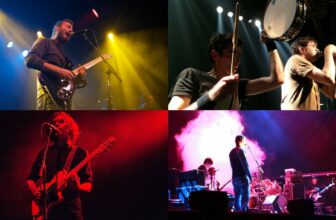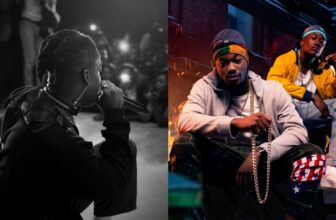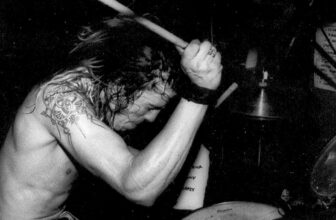A Guide to the Different Punk Subgenres
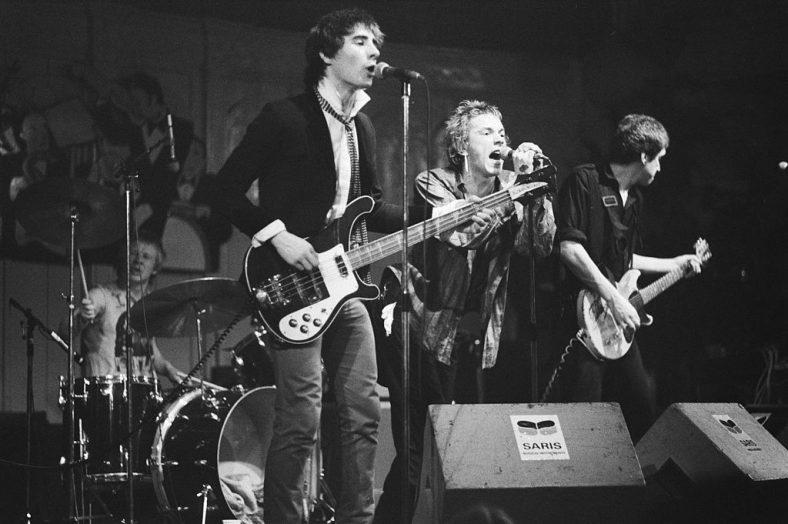
Over the years, punk music has evolved into a plethora of styles that were influenced by cultural, musical, and political factors.
If you’re new to punk, you’d be surprised with how diverse the punk scene has become. Not to mention, telling the difference between 2 punk subgenres can be pretty tricky for you.
In this guide, we’ll explore 11 different punk subgenres to see what they’re all about.
Contents
1. Anarcho-Punk
Anarcho-punk rose to prominence back in the late 1970s in the United Kingdom. The song “Anarchy in the UK” by the English band Sex Pistols is widely regarded as the first anarchy-punk piece.
The subgenre is recognized by its politics-inspired lyrics and themes that promote anarchism, anti-government movements, and mainstream issues like animal rights.
Over the years, more anarcho-punk bands like Crass and Dead Kennedys came to life. Many of these groups rejected the commercialization of the anarchy-punk movement, claiming that it contradicts the subgenre’s values and beliefs.
Other notable anarcho-punk bands include SubHumans and Flux of Pink Indians.
2. Oi!
Oi! is a style of punk music that emerged in the 1970s in the United Kingdom as a reaction to the first wave of punk bands. The guitarist Steve Kent described the punk rock artists at that time as “trendy university people using long words, trying to be artistic…and losing touch.”
The pioneers of the oi! movement wanted to create punk music for the working class, as the punk bands at that time primarily targeted middle-upper class fans. In other words, you can think of oi! as the gangsta rap of this genre.
Oi! Is heavily associated with anarcho-punk since the lyrics often mention topics like police brutality and poverty. However, oi! is harsher.
Some notable oi! bands encompass Anti-Establishment, the 4-Skins, The Last Resort, and Angelic Upstarts.
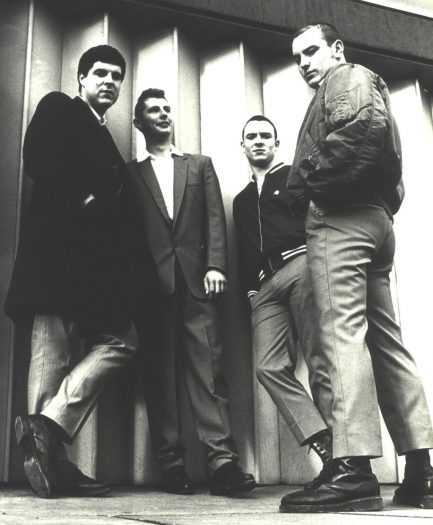
3. Hardcore Punk
Hardcore punk is all about rejecting commercialism and drifting away from anything that can be classified as mainstream rock. It was first defined in the late 1970s in Vancouver and several US cities that include San Francisco and Washington D.C.
The subgenre took the rock industry by storm and was a direct cause behind the establishment of independent record labels in the 1980s. Hardcore punk places more emphasis on rhythm than melody. It’s also characterized by off-the-charts loudness and heavy distortions. Hardcore punk vocalists often chant, too.
Bad Brains, Sex Pistols, Black Flag and Circle Jerks are among the best hardcore punk bands of all time.
4. Post-Hardcore Punk
Post-hardcore punk maintains the foundations of hardcore punk, with the addition of better expression of creativity.
The subgenre appeared in the punk rock scene in the 1980s in the United States, particularly after acts like Minuteman and Hüsker Dü caught significant attention. Post-hardcore punk keeps the same fast tempos, DIY ethics, and loudness as hardcore punk.
Other notable names in the post-hardcore punk scene encompass Fugazi, At the Drive-in, Thrice, and Glassjaw.
5. Horror Punk
Horror punk? Yup, it exists. This subgenre is literally meant to scare you. Horror punk artists combine the distinctive sounds of proto-gothic and punk rock music with scary scenes and violent lyrics. However, it’s not uncommon to find horror punk pieces that discuss politics.
The horror punk style of music originated in New Jersey in the late 1970s. Examples of bands that made a significant contribution to the horror punk scene include Misfits, 45 Grave, Blitzkid, and Balzac.
6. Street Punk
Street punk is a working class subgenre of punk that’s highly influenced by oi!. It emerged in the early 1980s in the United Kingdom after oi! gained significant popularity.
Street bank incorporates sing-along choruses, communal vocals, single-note guitar lines, and short solos. The lyrics often involve political issues. This style of punk music took inspiration from heavy metal bands like Iron Maiden.
Some bands that define themselves as street punk include The Exploited, Discharge, Lower Class Brats, The Unseen, and Chaos UK.
7. Queercore
Queercore generally involves sexuality-related themes about gender identity and expression. The subgenre came into prominence in the 1980s, particularly in Toronto, Canada.
So, how did it all start? Well, most music fans agree that the publication of the zine J.D.s was the spark that gave birth to Queercore.
Some of the most popular queercore bands include Pansy Division, Team Dresch, Lesbians on Ecstasy, and God Is My Co-Pilot.
8. Riot Grrrl
Riot grrrl is more of an underground subcultural movement rather than a subgenre of punk. It started in the early 1990s in Washington, Olympia, and other regions in the United States.
This style of music is influenced by feminism, particularly in opposition to the dominant sexism in the punk music industry.
Some notable riot grrrl bands encompass Huggy Bear, Bikini Kill, Le Tigre, and Sleater-Kinney.
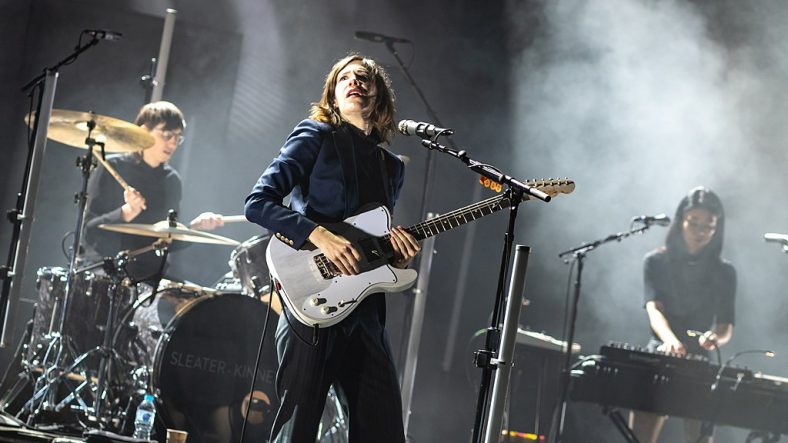
9. Skate Punk
Skate punk is a style of punk music that is, as you might’ve guessed, widespread among the skaters’ community. Many musicians view it as a style of pop hardcore. Some of the earliest works of skate punk popped in the early 1980s in the United States.
The subgenre is defined by vocal harmonies, guitar riffs, fast tempos, and drums. Examples of the bands that led the development of the subgenre include Adolescents, Buzzcocks, Circle Jerks, and Black Flag.
10. Punk Rock Fusion Genres
Punk rock fusion encompasses various genres that resulted from mixing up punk with other styles of music.
For instance, Celtic punk borrows the use of instruments like fiddles and bagpipes and adds it to the unadulterated style of punk music. Flogging Molly, The Tossers, and The Real McKenzies are a few names that helped the subgenre mature.
One more example is anti-folk, a combination of punk rock and folk music characterized by experimentation and mockery. Acts like The Moldy Peaches, Herman Dune, and AJJ can be classified as anti-folk.
Another popular punk rock fusion genre is 2 tone. This one blends elements from various genres like rocksteady, new wave, and reggae.
11. Melodic Punk
Melodic punk is a group of punk subgenres that has an upbeat nature and focuses on melodies. Dance punk, for example, adds disco and electro music elements to punk rock to create songs to dance to. Bands such as Yeah Yeah Yeahs, Talking Heads, New Order, and Death from Above 1979 have led the dance-punk scene for years.
Another popular melodic style of punk music is cowpunk. It mixes punk rock with country music, resulting in punk pieces that emphasize simple forms, dance tunes, and folk lyrics. Social Distortion, The Long Ryders, and Dash Rip Rock are among the biggest names in the cowpunk scene.
Summary
So these were some of the different punk subgenres out there. Punk music inspired entire generations, which explains why it diversified into lots of subgenres.
Hardrock punk, anarcho-punk, and Oi! are widely considered as the most popular punk rock styles in the world. Punk rock fusion genres have quite an audience, too.
On a final note, remember that this guide covered just a few styles. There are so many other punk subgenres for you to explore!
(Featured Image) Sex Pistols Image by: Photograph: Koen Suyk. In: Nationaal Archief, Den Haag, Rijksfotoarchief: Fotocollectie Algemeen Nederlands Fotopersbureau (ANEFO), 1945-1989 – negatiefstroken zwart/wit, nummer toegang 2.24.01.05, bestanddeelnummer 928-9665, CC0, via Wikimedia Commons
The 4-Skins Image by: the4Skins2004, CC BY-SA 3.0, via Wikimedia Commons
Sleater-Kinney Image by: Raph_PH, CC BY 2.0, via Wikimedia Commons

